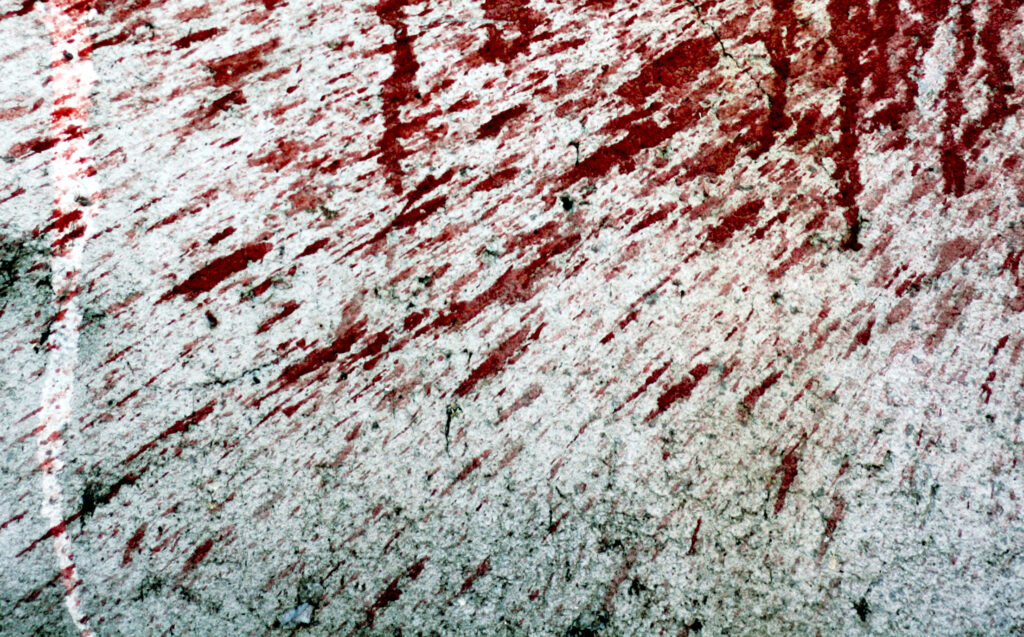Parashat Vayiqra/Shabbat Zakhor
Leviticus 1:1-5:26
“Bloodshed” is what we call it – the harm and death we inflict on living creatures, most especially upon our fellow human beings. The first time the Torah mentions blood is after a murder of a man, Abel, by his own brother, Cain. Or we call it “spilling blood,” as if we knocked over a milk container, only it’s blood that the vessel contained, blood that has spilt. We are constantly, senselessly, shedding and spilling blood. Is there any use crying over it?
Our Torah portion employs a couple of other verbs when speaking about what we do with the blood of the animals we sacrifice in the Tabernacle. We must “throw” or “dash” the blood against the sides of the altar when we voluntarily offer a sacrifice that is meant to be a full offering to God (Lev. 1:5) or when we celebrate our wellbeing with a sacrifice from which we eat (Lev. 3:2) What does this seemingly aggressive and random gesture convey?
On the other hand, when we offer sacrifices that we are obligated to bring in order to gain atonement, then the blood is not “thrown,” but is sprayed and daubed. (Lev. 4:5-6) For these sacrifices our gestures are more measured. We seem to be in better control of directing the blood to the places where the blood should land.
When we voluntarily offer gifts to God our handling of blood is more spontaneous. When we handle blood because we are required to seek atonement, we do so more attentively. Either way, though, blood is shed in the very place we have dedicated to holiness and communion with God. Our thanksgiving must be expressed by splattering blood. Our innocence must be achieved by deliberately placing blood on holy surfaces. But shouldn’t our sacred shrine be a space wholly devoid of bloodshed? Yet this is not the direction chosen by the Torah. Blood is the very medium of attaining nearness to God and acceptance from God.
Perhaps the Torah seeks to create a counter-force to the human bloodletting that is uncalled for and, therefore, evil, but which is ever present in our violent world of senseless war and conflict. Instead the Torah creates an artificial arena in which the drama of bloodletting is purposeful and effective. “Blood is life” says the Torah. (Deut. 12:23) In the space we have carved out as sacred to the Source of Life, we exchange our own lives with the life of an animal, whose flesh is consumed by fire or by eating, but whose blood is collected and mostly returned to the earth. Yet some drops will be lost through our splattering them or deliberately placing them on the shrine’s furniture. We act out our powerlessness to avoid drawing blood. And by not hiding this incapacity to avoid doing damage, and by containing it within God’s House, we hope we will elicit God’s compassion and forgiveness. And with the help of God’s compassion, we hope that we can confine bloodshed to the walls of that shrine, so that it will not spread across the land.
Shabbat Shalom
Rabbi David Greenstein
Subscribe to Rabbi Greenstein’s weekly d’var Torah
Image: by Dalibor Levíček, used via CC License
Thank you to John Lasiter for suggesting the title and selecting an image for this Torah Sparks – Rabbi Greenstein
- Toby Stein: In Memoriam - Thu, Feb 8, 2024
- Faithfulness and Hope: Parashat Sh’lach - Thu, Jun 23, 2022
- Past Their Prime: Parashat B’ha`a lot’kha - Thu, Jun 16, 2022

